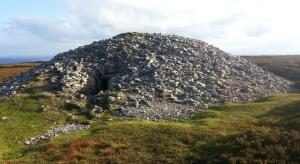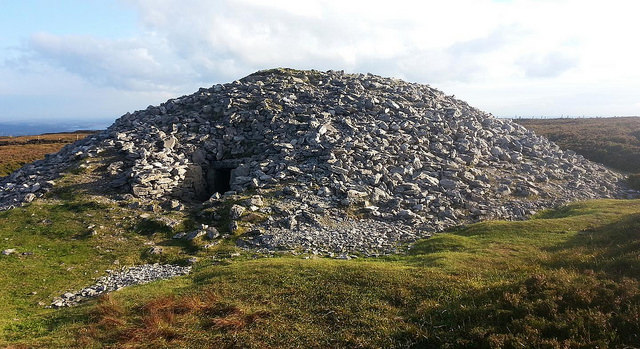
UNIVERSITY OF OTAGO—New insights into the lifeways – and death rites – of the ancient people of Ireland are being provided through funerary studies led by a researcher at the Department of Anatomy at New Zealand’s University of Otago.
The findings, which have been published in the journal Bioarchaeology International, are part of a project applying modern techniques and research questions to human remains that were originally excavated more than 100 years ago.
The new paper, whose lead author is Dr Jonny Geber, focuses on the 5000 years-old Passage Tomb Complex at Carrowkeel in County Sligo in the north-west of Ireland. This site is one of the most impressive Neolithic ritual landscapes in Europe, but despite that, is relatively unknown.
The research team analysed bones from up to seven passage tombs that included both unburnt and cremated human remains from around 40 individuals. Much remains unknown about these Stone Age people.
Dr Geber says he and his colleagues determined that the unburnt bone displayed evidence of dismemberment.
“We found indications of cut marks caused by stone tools at the site of tendon and ligament attachments around the major joints, such as the shoulder, elbow, hip and ankle,” he says.
Dr Geber says the new evidence suggest that a complex burial rite was undertaken at Carrowkeel, that involved a funerary rite that placed a particular focus on the “deconstruction” of the body.
“This appears to entail the bodies of the dead being ‘processed’ by their kin and community in various ways, including cremation and dismemberment. It was probably done with the goal to help the souls of the dead to reach the next stages of their existence.”
This study has been able to show that the Carrowkeel complex was most likely a highly significant place in Neolithic society in Ireland, and one which allowed for interaction and a spiritual connection with the ancestors.
The evidence suggests that the people of Neolithic Ireland may have shared similar beliefs and ideologies concerning the treatment of the dead with communities beyond the Irish Sea, according to the researchers, Dr Geber says.
______________________________________
Cairn K—Part of a 5000 years-old Passage Tomb Complex at Carrowkeel in County Sligo in the north-west of Ireland. This site is one of the most impressive Neolithic ritual landscapes in Europe, but despite that, is relatively unknown. Researchers have now analysed bones from up to seven passage tombs that included both unburnt and cremated human remains from around 40 individuals Credit: Sam Moore
___________________________________________________
Article Source: University of Otago news release
___________________________________________________
Receive 30 days free access to the popular new CuriosityStream lineup of documentaries on science, history, nature, and technology as a new Popular Archaeology premium subscriber.
___________________________________________
Travel and learn with Far Horizons.
____________________________________________
This richly illustrated issue includes the following stories: Recent findings shedding new light on the whereabouts of the remains of Philip of Macedon, father of Alexander the Great; how an archaeologist-sculptor is bringing bones of the dead back to life; archaeologists uncovering town life at the dawn of civilization; an exclusive interview with internationally acclaimed archaeologist James M. Adovasio about what makes the Meadowcroft Rockshelter prominent in the ongoing search for the first Americans; what archaeologists are finding at the site of the ancient city of Gath, the home town of the biblical Philistine giant, Goliath; and how scientists are redrawing the picture of human evolution in Europe. Find it on Amazon.com.








